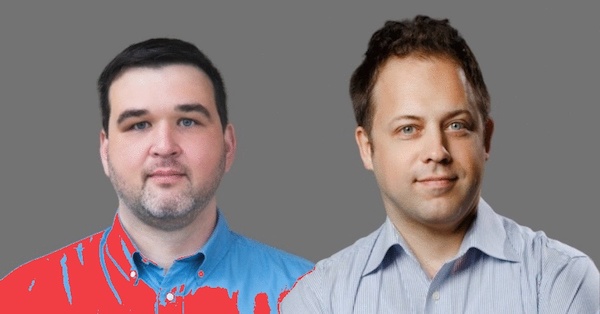It’s 2001 in St Petersburg, the cultural capital of Russia and Oleg Shchegolev pings his childhood friend Dmitri about this strange, new thing he’s learning about: Search Engine Optimisation.
They start experimenting… writing code and taking SEO roles in Russian eCommerce businesses.
Fast forward seven years and the first version of SEMRush launches… and revenue doubles organically for four years up to $1m ARR before they both decide to jump in full time.
By 2019, they hit $100m ARR, six million free users and over 60 thousand customers.
How?
This post explains…
Before we jump in, if you like this study on SEMRush, click here to see revenue data from 714 other saas companies with growth rates similar to SEMRush, that are all profitable. You’ll enjoy this data on Freshworks and how they passed $100m in revenues and will likely IPO in next 12-24 months using freemium approach.
Growth Lever 1 – Founder Industry Focus
Forget product <> market <> fit.
Or even founder <> product <> market <> fit.
In this growth story, we’re talking founder <> industry <> focus.
Ever since Oleg was introduced to SEO in his third year as an information security student in 2000, he was hooked.
His old childhood friend Dimitri joined him in 2001 and ever since then, they have been soley focussed on the SEO industry.
That’s close to twenty years, or forty “founder years”.
Basically we just figured out what was interesting to us and what we were ready to work towards.
How many SaaS businesses can say that their founding team now has forty years of experience?
So in 2001, both Oleg and Dimitri were working as SEO specialists… and haven’t stopped.
They stayed completely focussed on solving the organic search problem: how to get more traffic from search engines.
They released their first SEO tool: SEOQuake in 2006 after running experiments to understand the factors that help websites rank higher in Google.
This led to the first version of SEMRush being released in 2007:
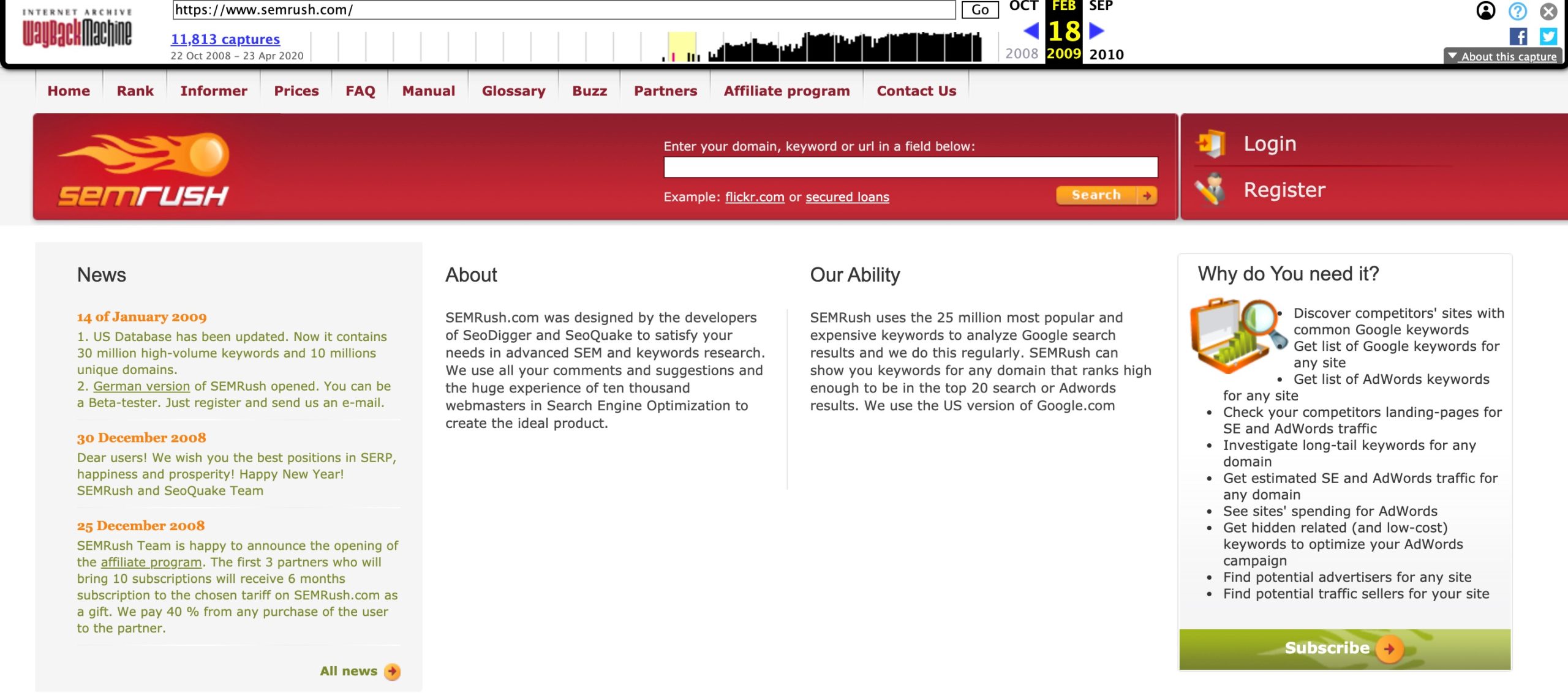
The analogy that springs to mind is that of the pitbull: Oleg and Dimitri have clamped their jaws down on something… and haven’t let go for twenty years.
It just so happened that this thing (increasing organic traffic) became more and more important as the number of websites increased exponentially:
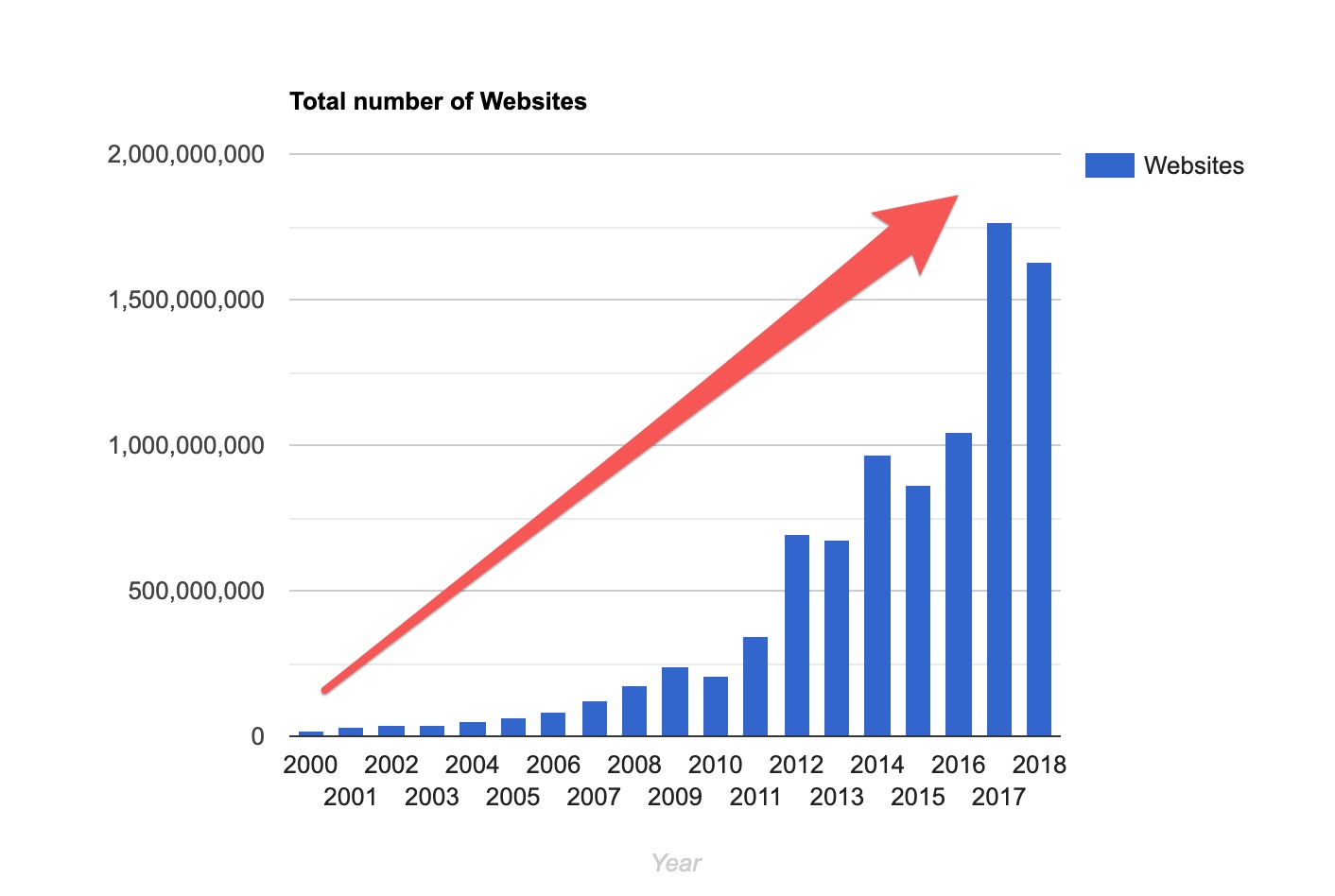
Was this luck, skill or a bit of both?
Who knows…
But what we do know is that Oleg and Dmitri chose an industry, and became obsessed.
LEARNING: Are you obsessed with your industry? If not, find one where you are…
Growth Lever 2 – Forget Everything Apart From Product
From 2007 to 2012 whilst Oleg and Dmitri went all in, all they did was build product.
That’s all they did.
Yes, I sure they spent time with family, friends and went to the gym.
But in their work life at least… they were obsessed.
This is the time period before you can even measure their traffic on SEMRush:
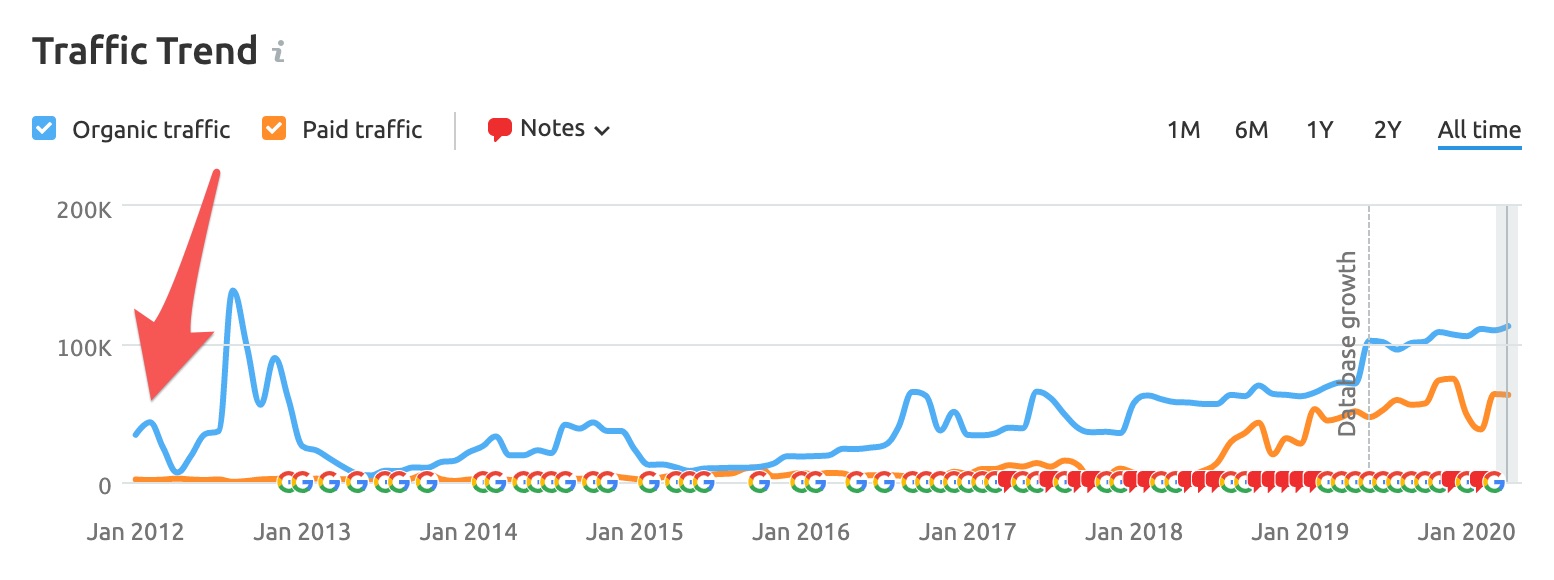
From Oleg himself:
The main criteria was our own satisfaction with the product. Everything was a mess, but then we started to get an idea of what SEMrush would look like.
And even now, it’s hard to find an interview online with these guys…
It seems they don’t care for podcast interviews, building their personal brand or speaking at conferences.
I can’t even add Dimitri to pitch him on my outsourced web development service:
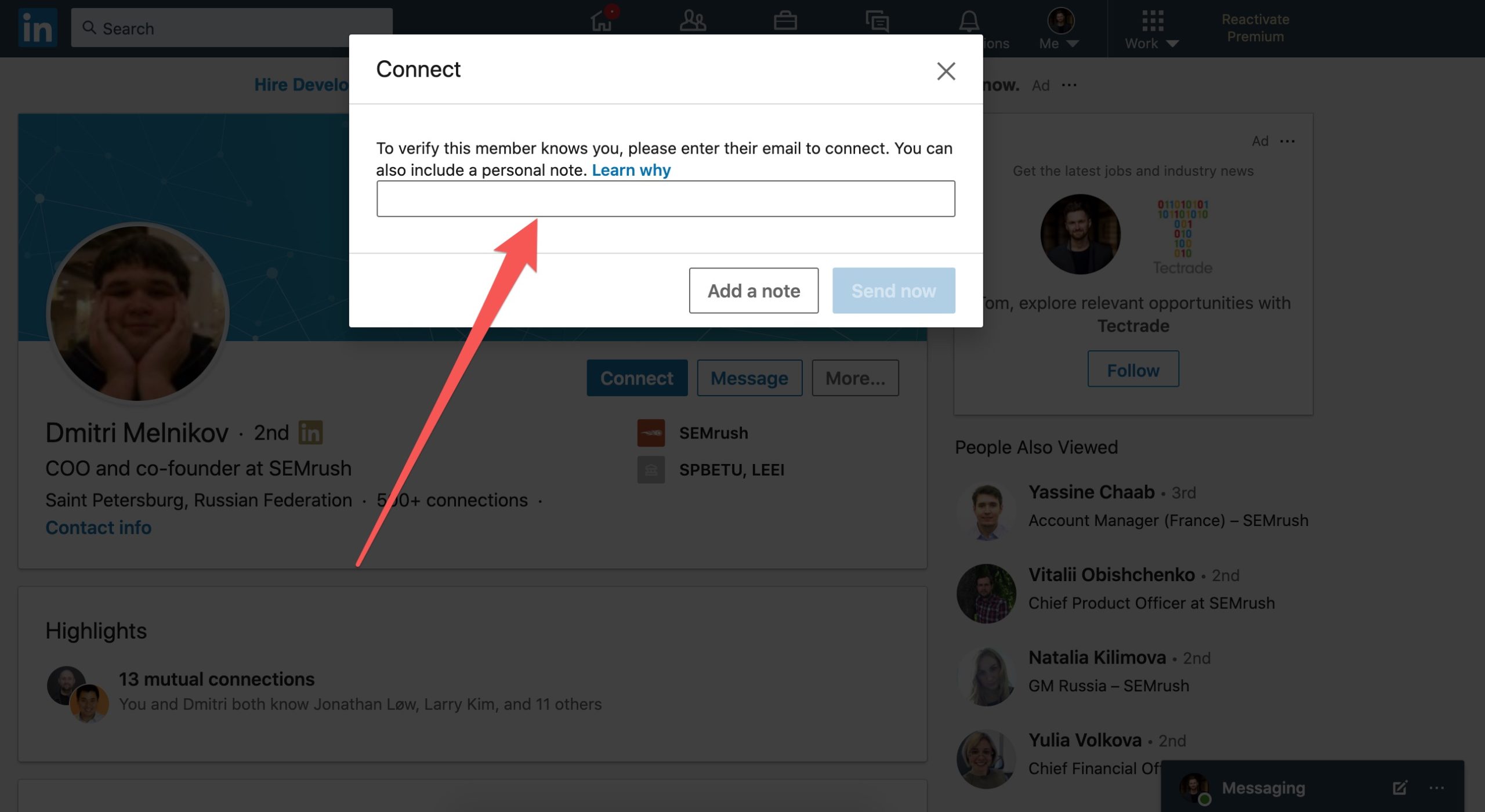
At the time, experts were telling Oleg and Dmitri that they needed to stop building and raise money, advice which they enthusiastically ignored.
Here’s Oleg recounting the experience in a rare interview:
There had always been a bunch of ‘experts’ who kept telling us that we were going to fail, that we needed to attract more external investments, and who kept giving other advice I couldn’t care less about. I guess these experts are now quite satisfied with their 9 to 5 work they do for pennies. I would consider donating money to them if I knew their contacts.
They kept pushing and over these four years revenue slowly but surely grew… through which growth tactic?
- SEO?
- PPC?
- Paid influencer shout outs?
- Direct sales?
- Linkedin outreach?
Nope, simply through word of mouth from the people that love the product that they invested four years of sweat and tears into.
Now I know this blog is called SaaS Marketer and that I have spent 6 years learning how to sell things online, but in most cases marketing should only be considered once that juicy word of mouth kicks in.
Why?
Because then you know you have a shot at retaining your customers long enough to be profitable.
LEARNING: Spend months, if not years building something people like before broadcasting your business to the world.
Growth Lever 3 – A Monster Affiliate Program
Let’s take another quick look at the first ever recorded SEMRush homepage:
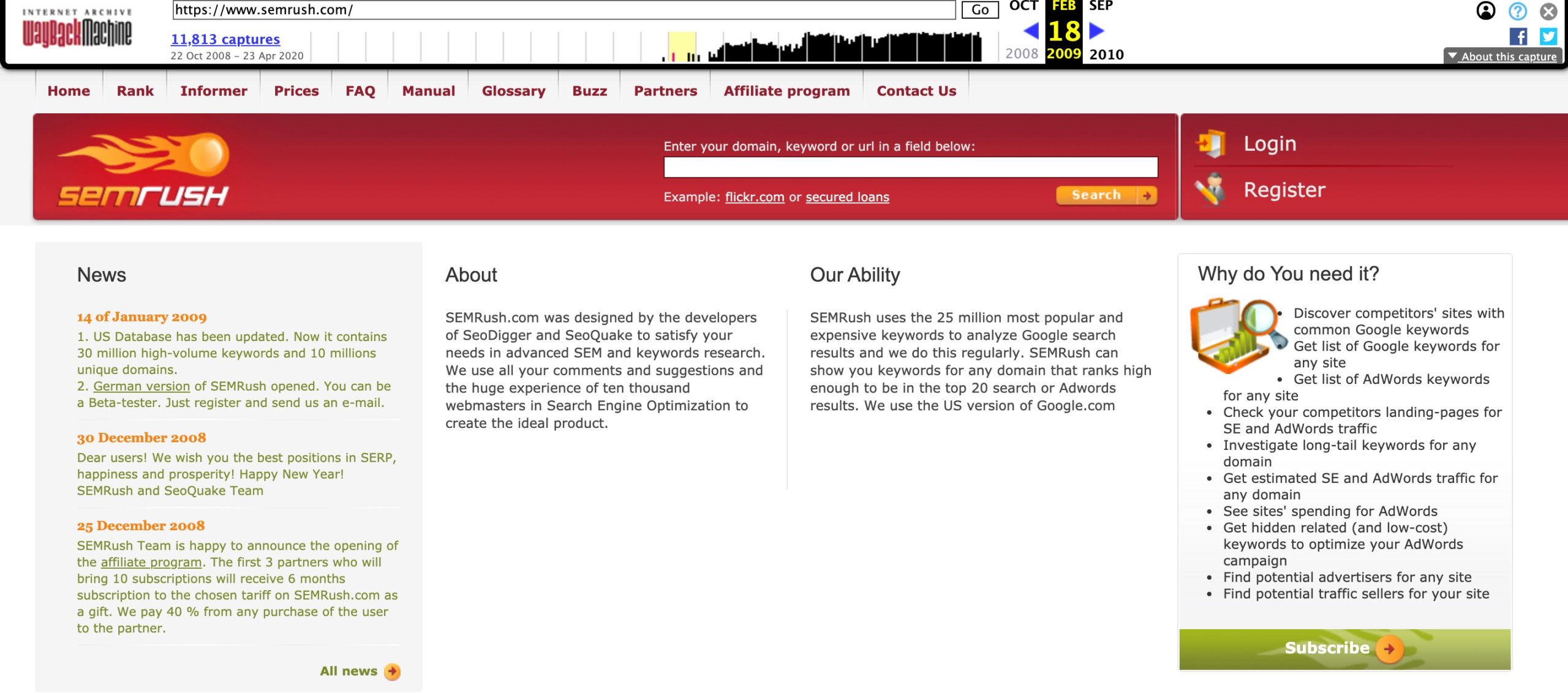
Did you see it?
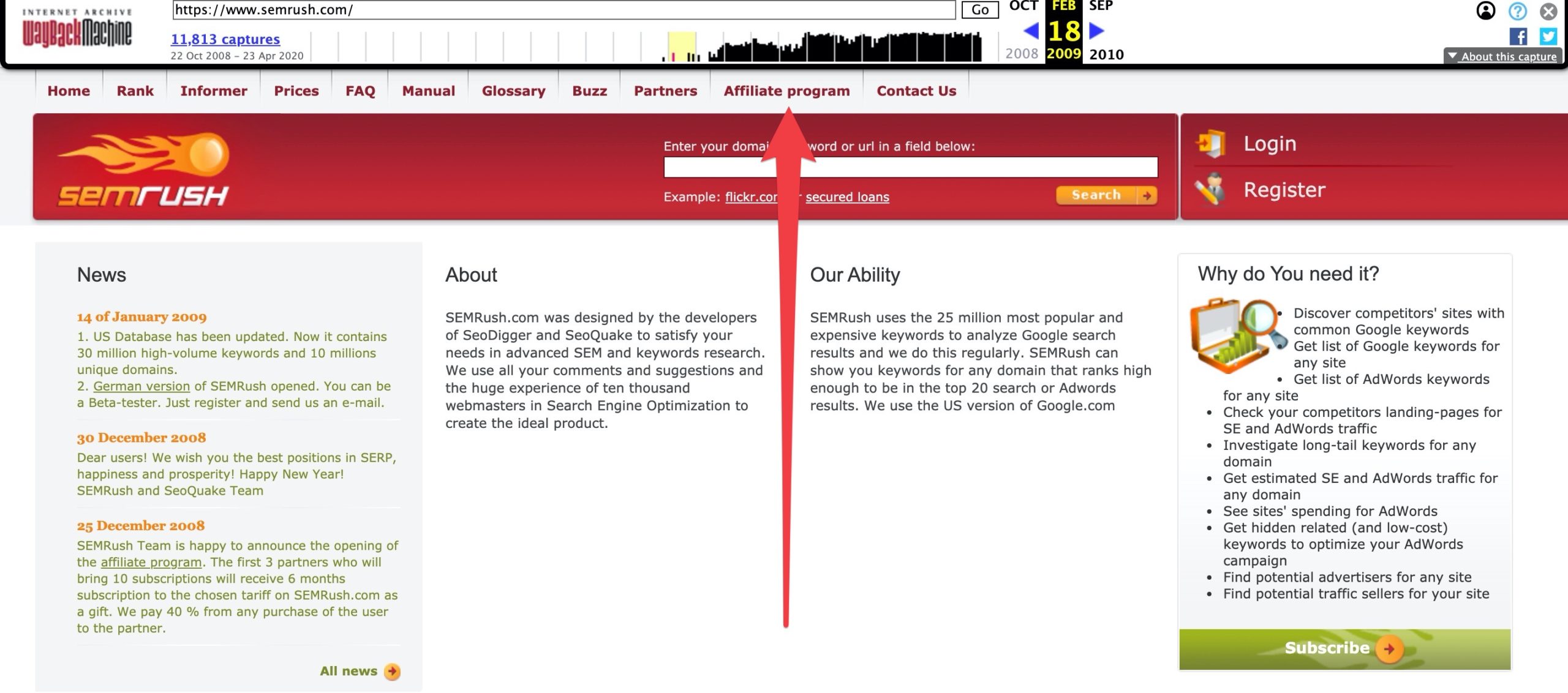
An affiliate program was not an add on for SEMRush, in the early days it was their primary growth channel. Which makes sense… Oleg and Dmitri are technical geniuses, certainly not marketing gurus – so why not outsource marketing?
And now?
It’s BIG.
I mean, it has more Twitter followers most SaaS businesses:
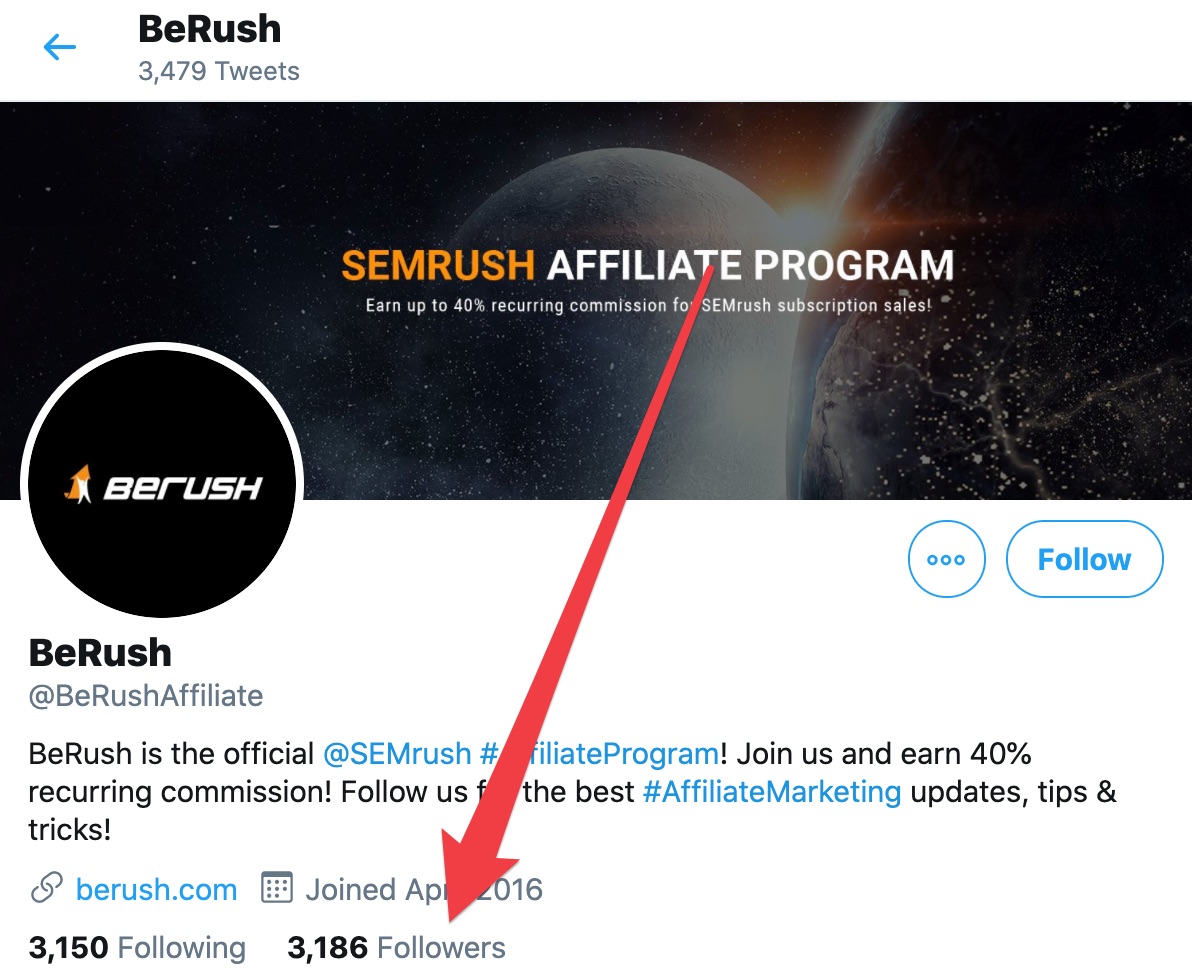
How?
They simply have made a VERY good deal for affiliates:
- 10 year, first click attribution where most SaaS affiliate programs offer 30 days
- 40% recurring commissions where most programs offer 30%
- Twice monthly payouts where most programs payout monthly
- Instant, 100% approval where most programs pick and choose affiliates
And when combined with extremely active support:
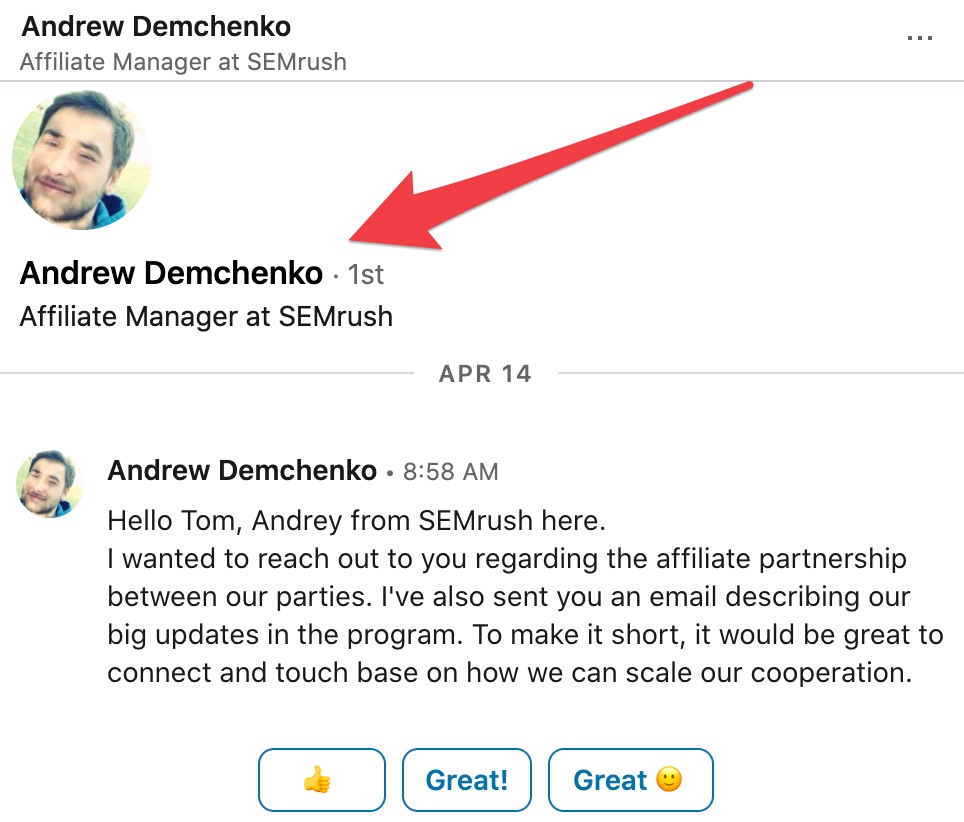
(Shout out to Andrew!)
This forms a very compelling case for the countless bloggers and affiliates in the online marketing space.
To give you a sense of the scale of this program, let’s look at online marketing blog: Bloggers Passion.
They have been promoting SEMRush since 2016 and have earned over $250k in commissions:
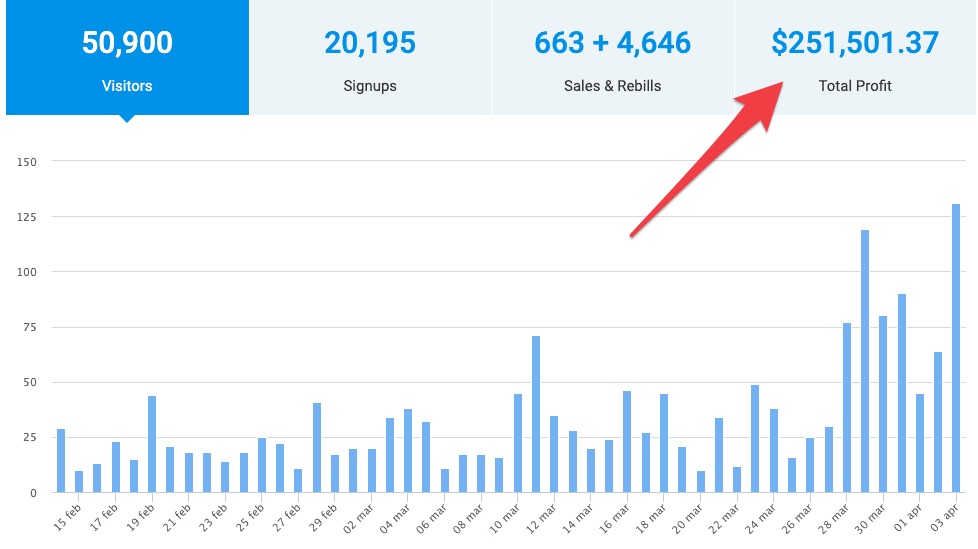
At 40% commission this affiliate has driven $625k in gross and $375k in net revenue over the time period.
That’s $7.8k of revenue per month with zero acquisition cost…
From one affiliate.
LEARNING: Your first growth channel should suit the interest and skillset of the founders…
Growth Lever 4 – Outsource Content Marketing To Influencers
Check this out: https://www.semrush.com/blog
Just a normal SaaS blog with different sections for different content formats right?
Pretty simple.
Except for one small difference…
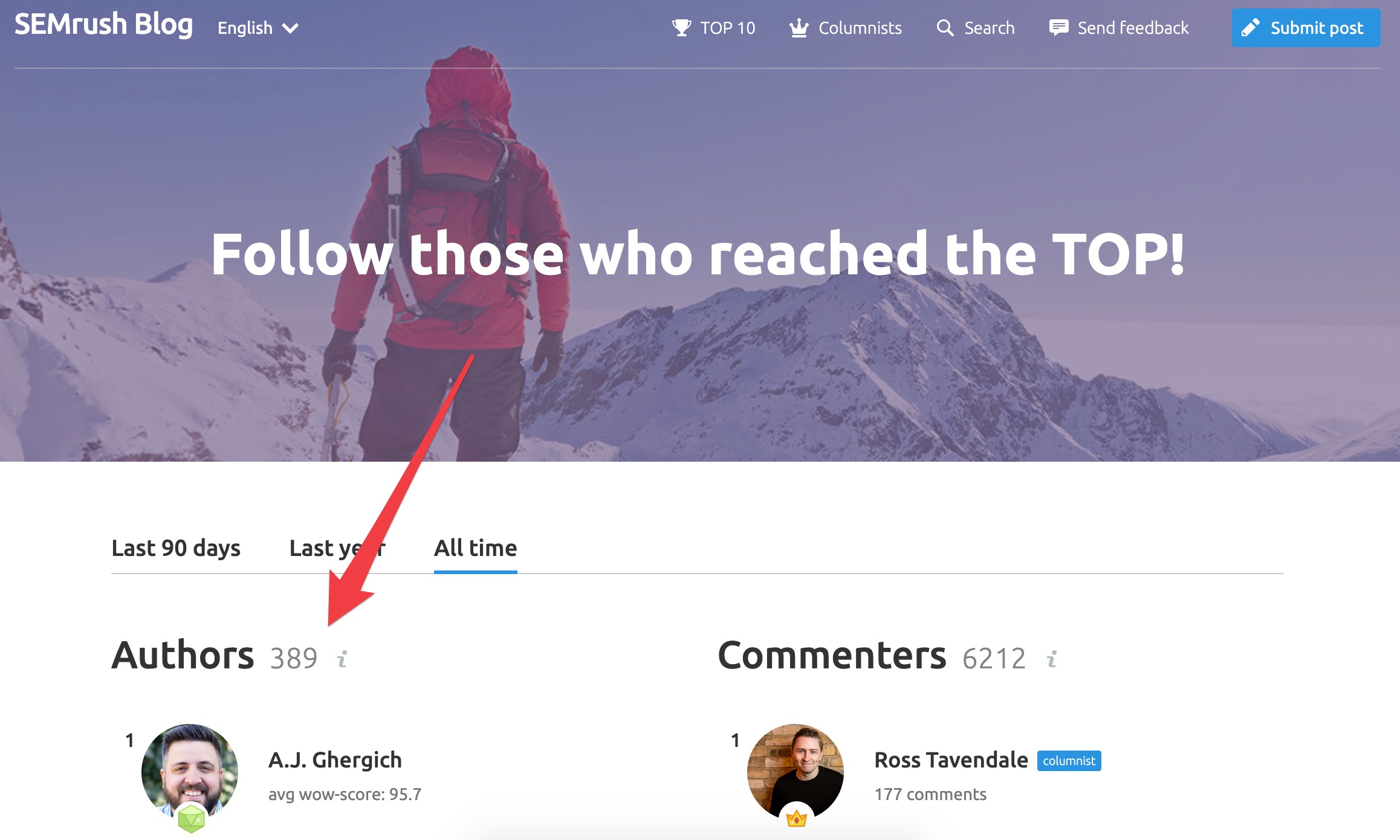
The majority of the content is not created by SEMRush employees.
Let’s take A. J. for example:
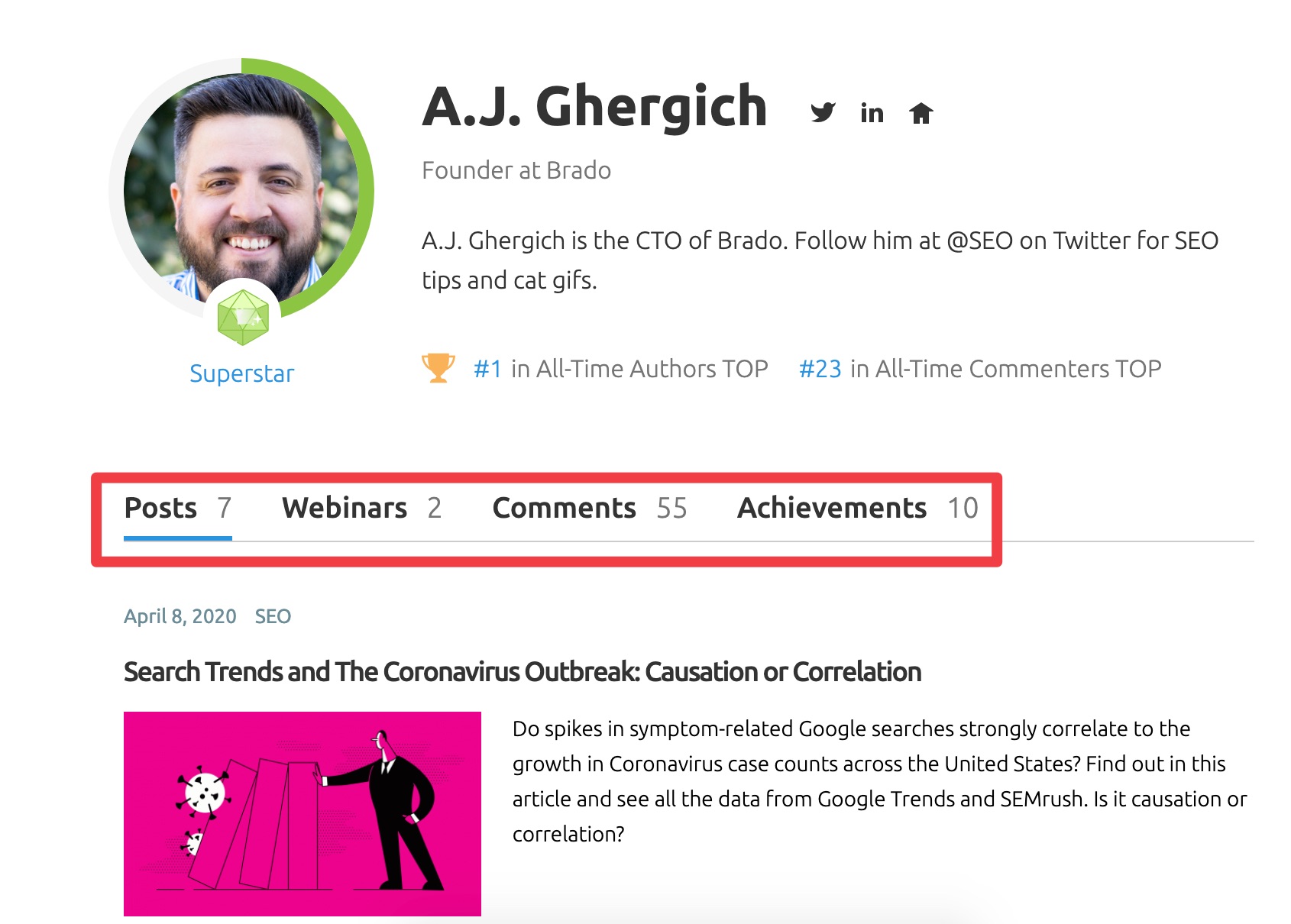
A verified Twitter profile, with an extremely expensive handle and 96k followers:
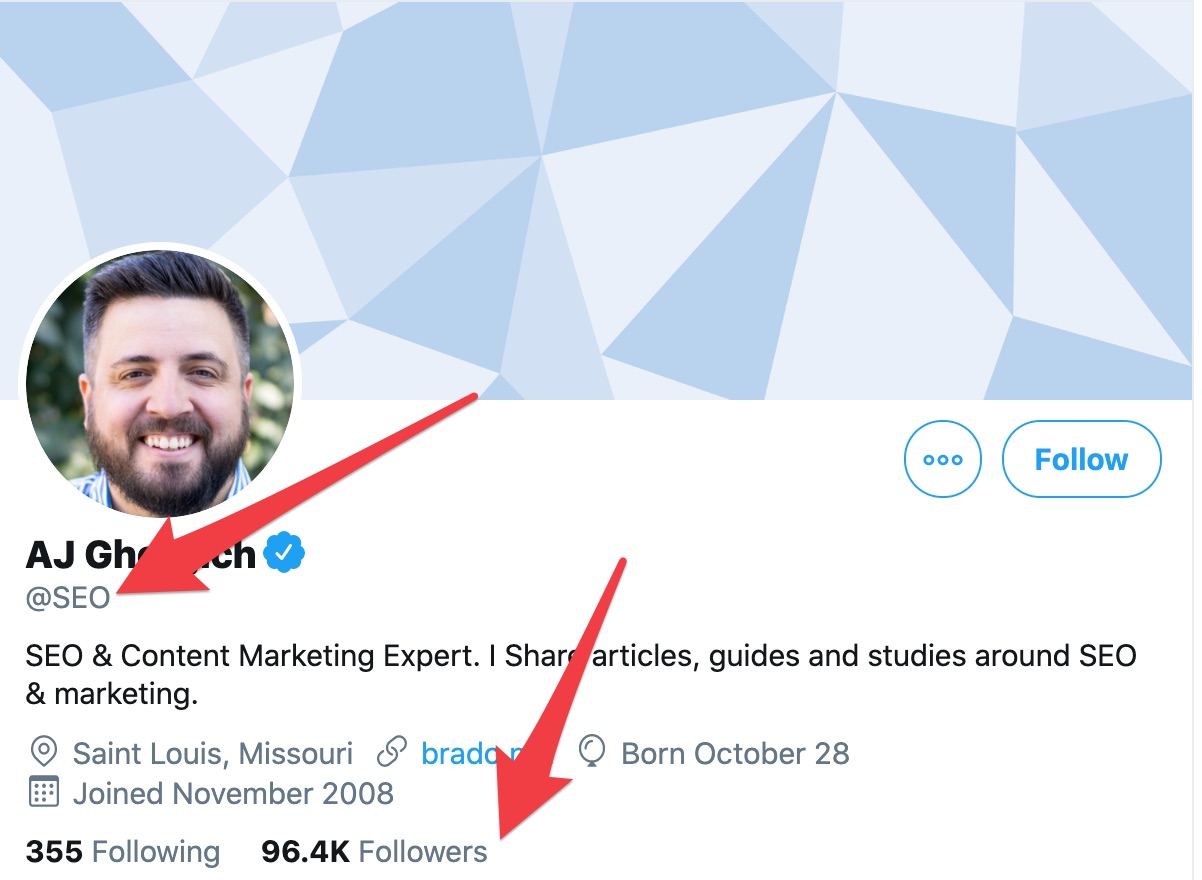
I would probably pay to have AJ write a post for my blog, something here tells me that SEMRush aren’t paying.
They not only get the expertise of these influencers in the content the produce… for free. But they also get access to their audience:
Search Trends and The Coronavirus Outbreak: Causation or Correlation? https://t.co/rOHaiBd69Q #COVID19 #SEO by @SEO and @semrush pic.twitter.com/pHLtaSfLcV
— AJ Ghergich (@SEO) April 8, 2020
And this strategy is not just reserved for written content, but also to Webinars:
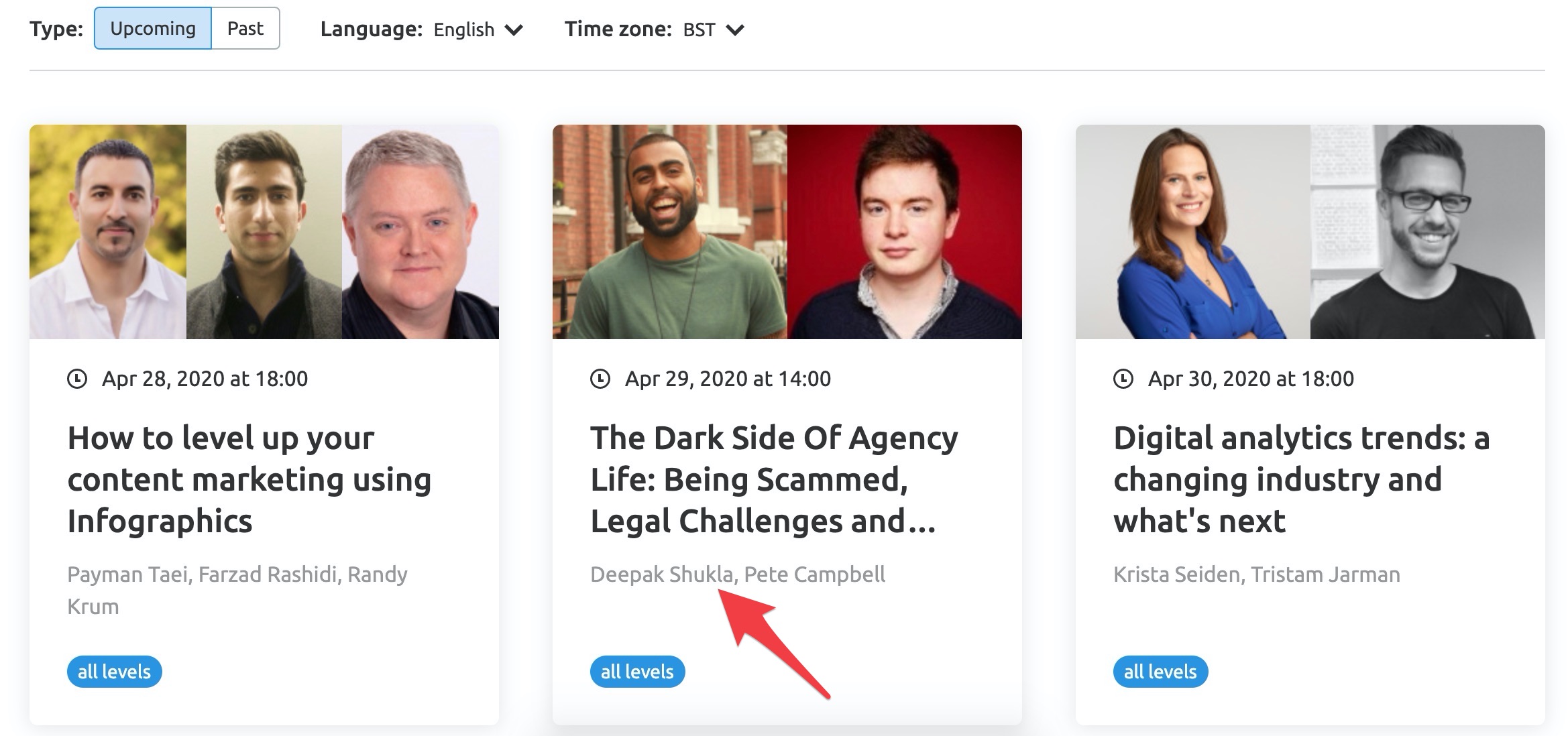
We spoke with one of these top contributors: Deepak Shukla of Pearl Lemon to understand why SEMRush work with these content creators and what the experience has been like for him:
The impact of this strategy?
See for yourself:
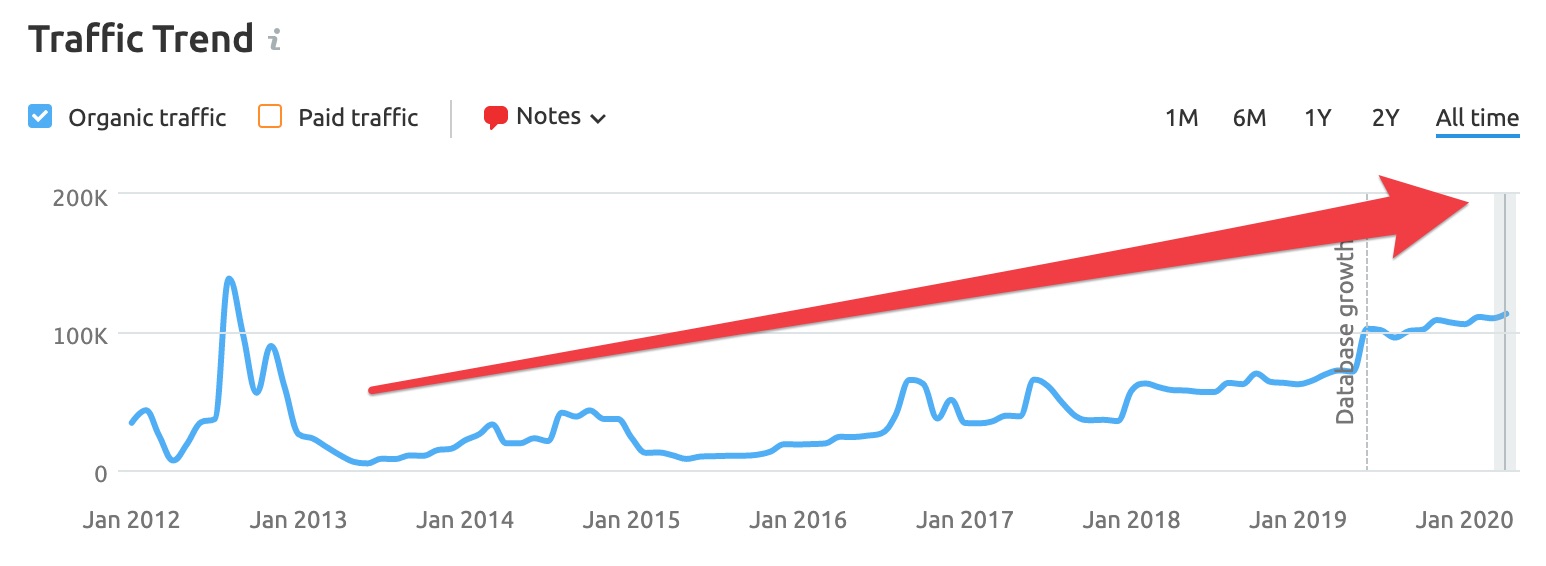
LEARNING: How can you leverage the expertise and audience of industry influencers to grow your SaaS?
Growth Lever 5 – Horizontal Product Expansion
SEMRush don’t focus on user churn.
They focus on revenue churn.
If they are able to increase revenue each month without adding any new customers… they’re happy.
In 2018, SEMRush’s monthly revenue churn hit 105%. This means that each month, if SEMRush don’t add any new customers… their revenue increases by 5%.
Assuming $80m revenue per year a this point and therefore $6.6m per month… SEMRush were adding a minimum of $330k new revenue each month from existing customers.
And that’s not taking into account lost revenue from churned customers.
How is this possible?
We discuss the people and process side of this revenue expansion in Growth Lever 10… but these people need something to sell right?
SaaS businesses typically have three axis to expand upon:
- Data – Access to more data provided by the tool
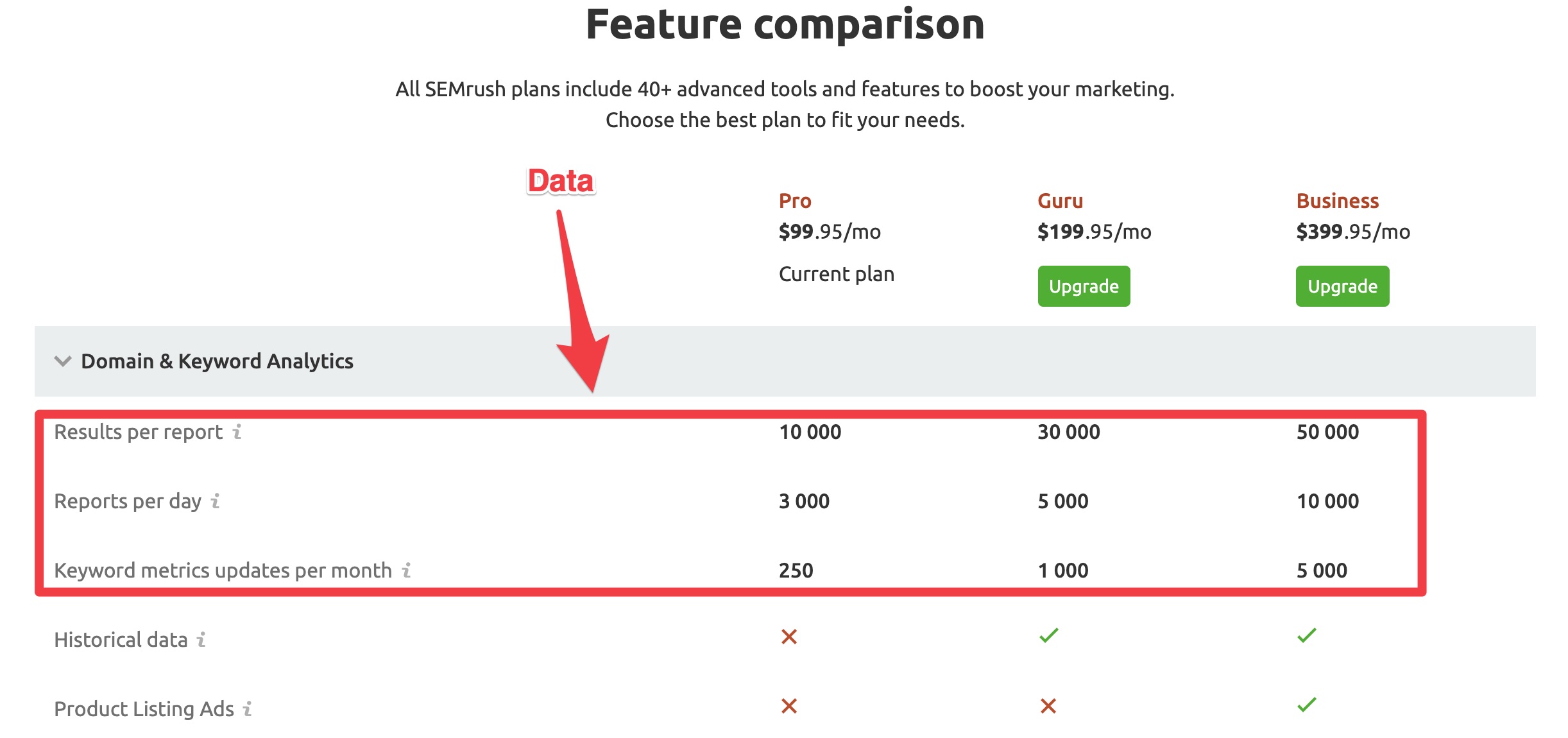
- Users – More people within a customer account can use the tool

- Features – Access to more features

And as we can see, SEMRush are utilising all three… but perhaps the most astonishing is the latter…
Here’s a list of SEMRush’s current feature set:
- Organic Research
- Advertising Research
- Display Advertising Tool
- Backlinks
- Keyword Research
- Product Listing Ads
- Traffic Analytics
- Market Explorer
- Keyword Difficulty
- Domain Vs Domain
- CPC Map
- Keyword Magic Tool
- SEO Writing Assistant
- Position Tracking
- Site Audit
- Social Media Tracker
- Social Media Poster
- On Page SEO Checker
- Backlink Audit Tool
- PPC Keyword Tool
- Ad Builder
- Content Analyzer
You get the point…
As the years roll pass, SEMRush re-invest profits back into building out functionality that expands their share of the digital marketer’s wallet.
Allowing them to give more value to users at a lower cost as they don’t need to factor in the high customer acquisition costs that standalone providers would experience.
They’ve even entered the content creation space with the SEMRush Marketplace:

What does the data say?
Average revenue per user has increased 6-7 times since launching in 2008 and has more than doubled since 2016.
And it doesn’t stop there, SEMRush plan to offer many other marketing service types through their marketplace:
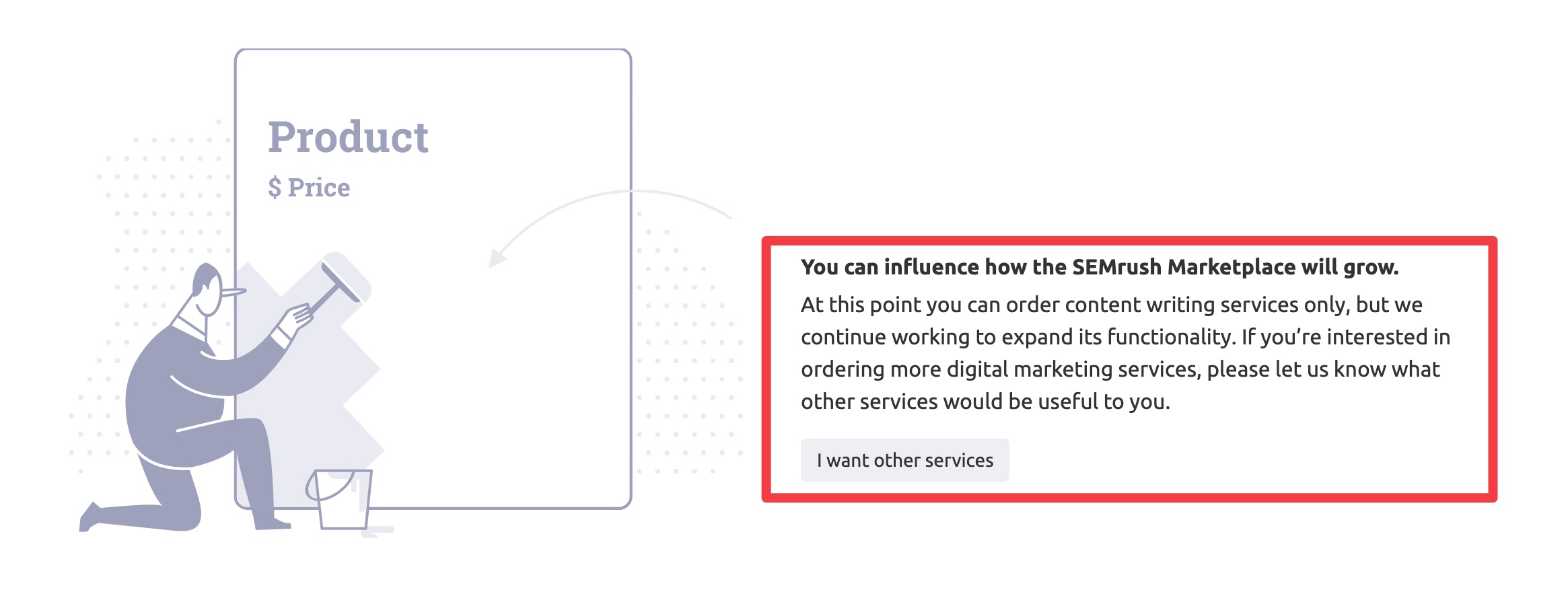
UpWork: watch out…
LEARNING: When you start: focus. And then use those profits to expand your wallet share…
Growth Lever 6 – Expanding Past The English Language
A strategy that few SaaS businesses have adopted…
Lifting and shifting their product and marketing into non-english speaking markets to dominate local competition:
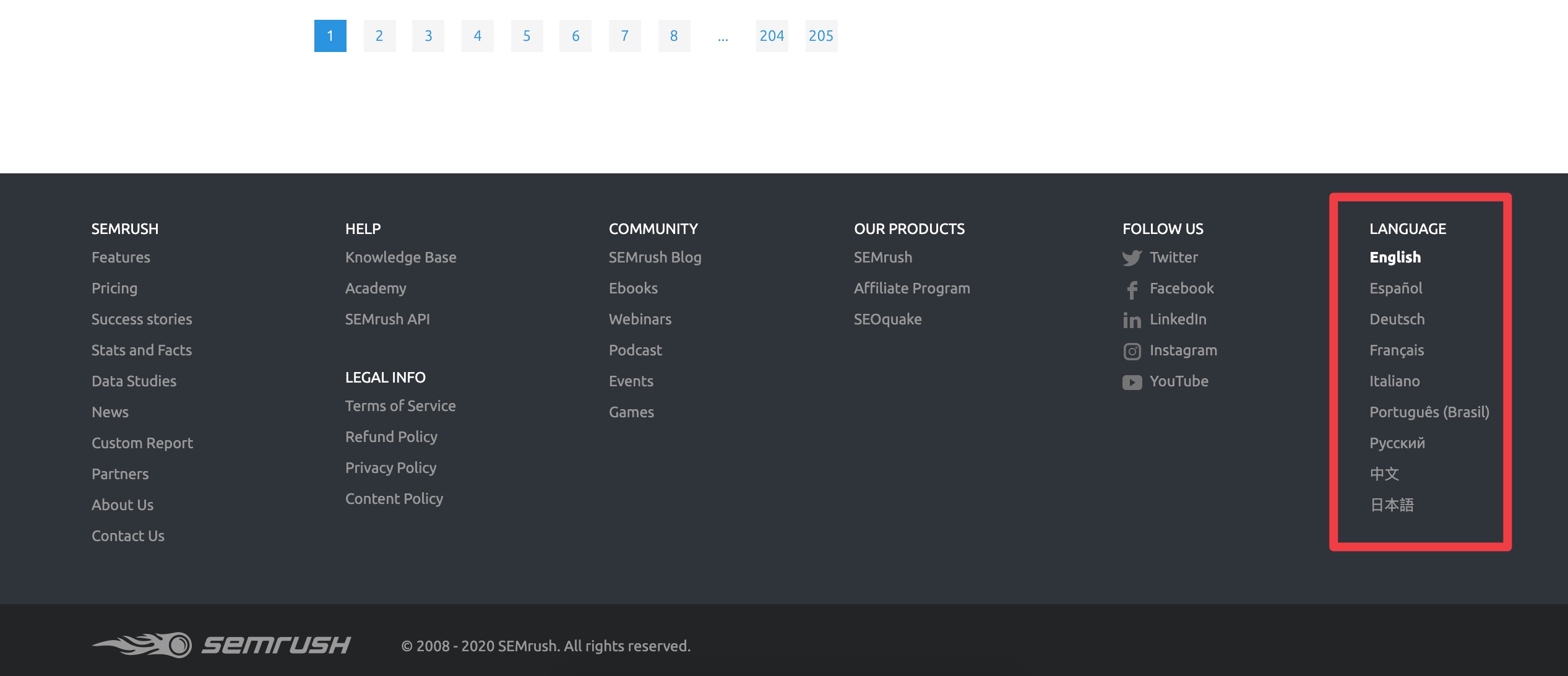
If we take a theoretical market that is 10% of the size of the english speaking market for digital marketing software, there will be local players in that space.
Reason suggests that the top local players in the market will have been able to produce a product that is 10% as good as the top player in the US market. As they will have had 10% of the customer base and therefore 10% of the R&D budget to invest back into the product.
Therefore, if a global player was to fully translate their product and move into the local market, it would be reasonable to suggest that there would be able to capture a fair chunk of the customer base.
This is the strategy that SEMRush implemented in 2018 and seem to be reaping the benefits of today.
This theory doesn’t just apply to product quality but also to marketing… bigger, global marketing budgets can dominate smaller, local competitors if used effectively.
Let’s look at YouTube for example:
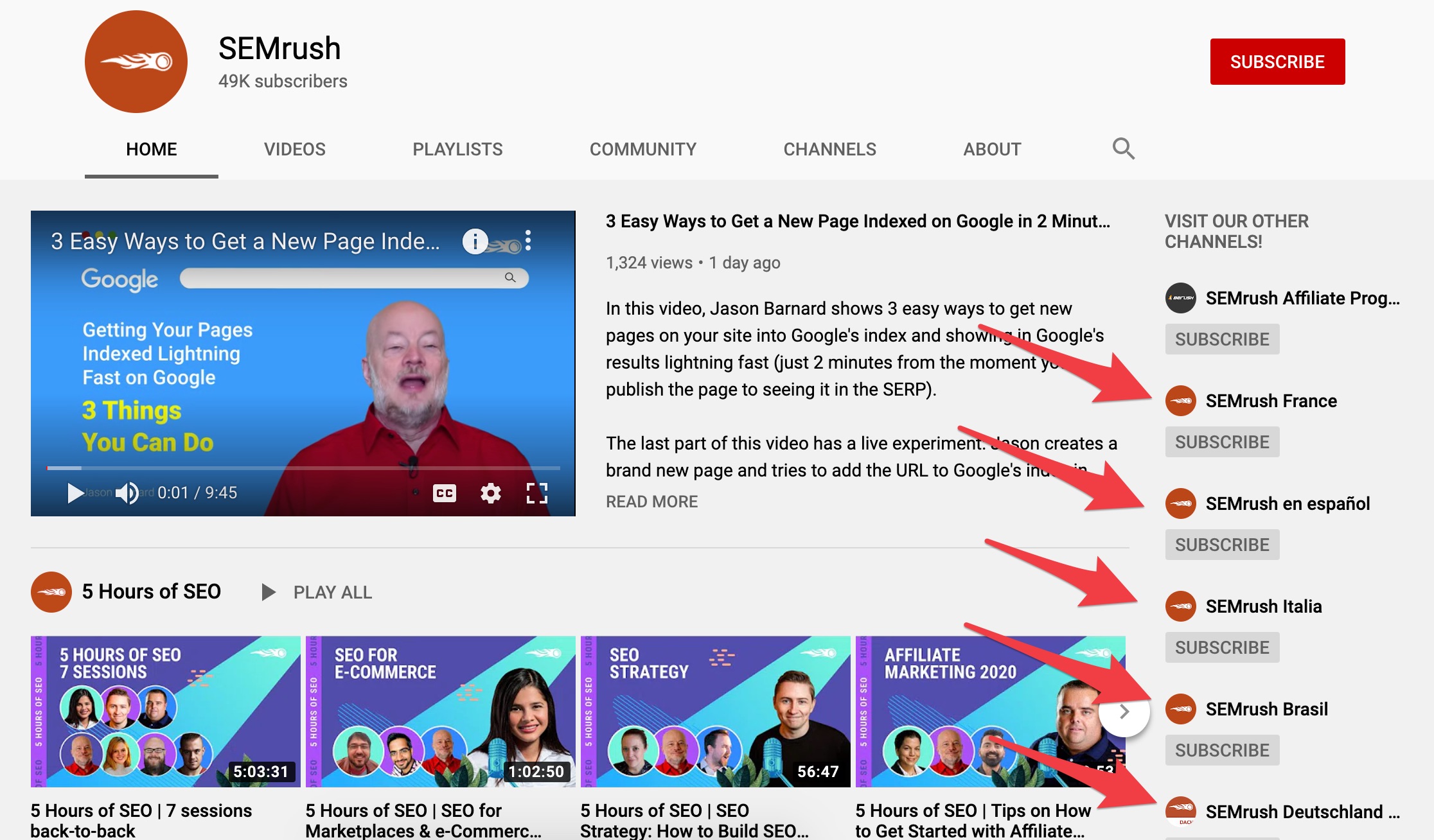
- SEMRush US – 49k subs
- SEMRush Spain – 11k subs
- SEMRush Brasil – 7k subs
- SEMRush Italy – 6k subs
- SEMRush France – 3k subs
- SEMRush Germany – 435 subs
SEMRush have added over 50% to their subscriber base through investment in five local language channels, presumably with less than 50% of the additional cost due to efficiencies associated with the increased scale of content creation.
This diversification in marketing is also starting to show in the organic rankings:

We can clearly see when SEMRush started focussing on these local markets and the impact it has had on their organic traffi:
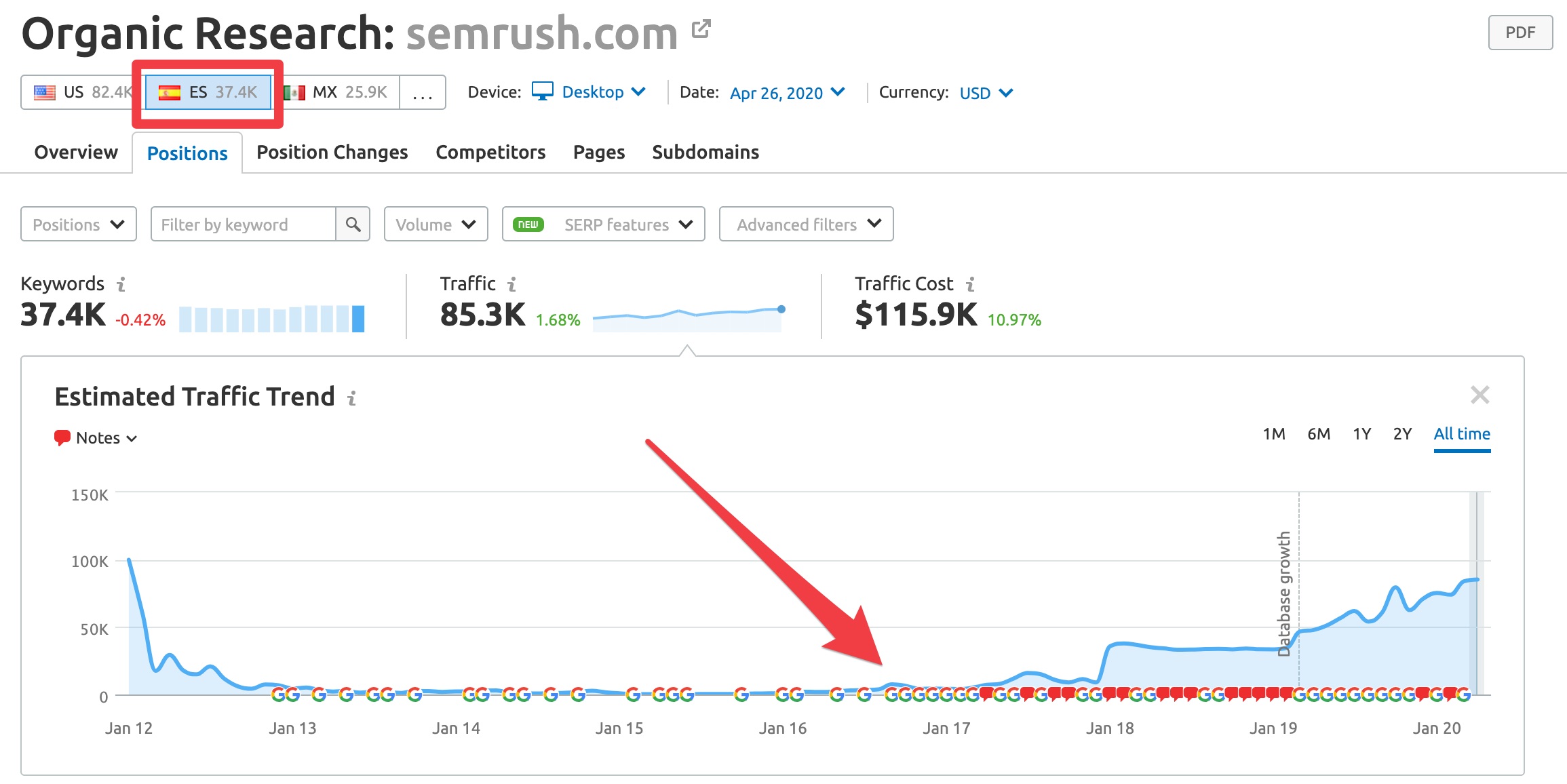
Almost an additional 100k of organic sessions per month… just to their Spanish speaking content.
LEARNING: How is your local language competition? Could you beat them if you translated?
Growth Lever 7 – Expansion Focussed Sales Team
By 2018, SEMRush has a team of 500 employees with an inside sales team of 50 reps.
Apparently this team formed in 2016/17, when their current Chief Revenue Officer Del Humenik joined the business. It took SEMRush approximately 8 years to embrace manual, in person sales.
Now, are these sales reps out prospecting for new, $99 per month accounts in the bloody red MarTech ocean?
No.
In fact, the SEMRush sales team is almost exclusively focus on expanding existing customer accounts.
They’re sat there waiting for the avalanche of SEMRush free accounts to upgrade to paid, essentially raising their hand as a qualified prospect.
We experienced this first hand over the past year as we currently are enrolled on the monthly billed Pro plan:
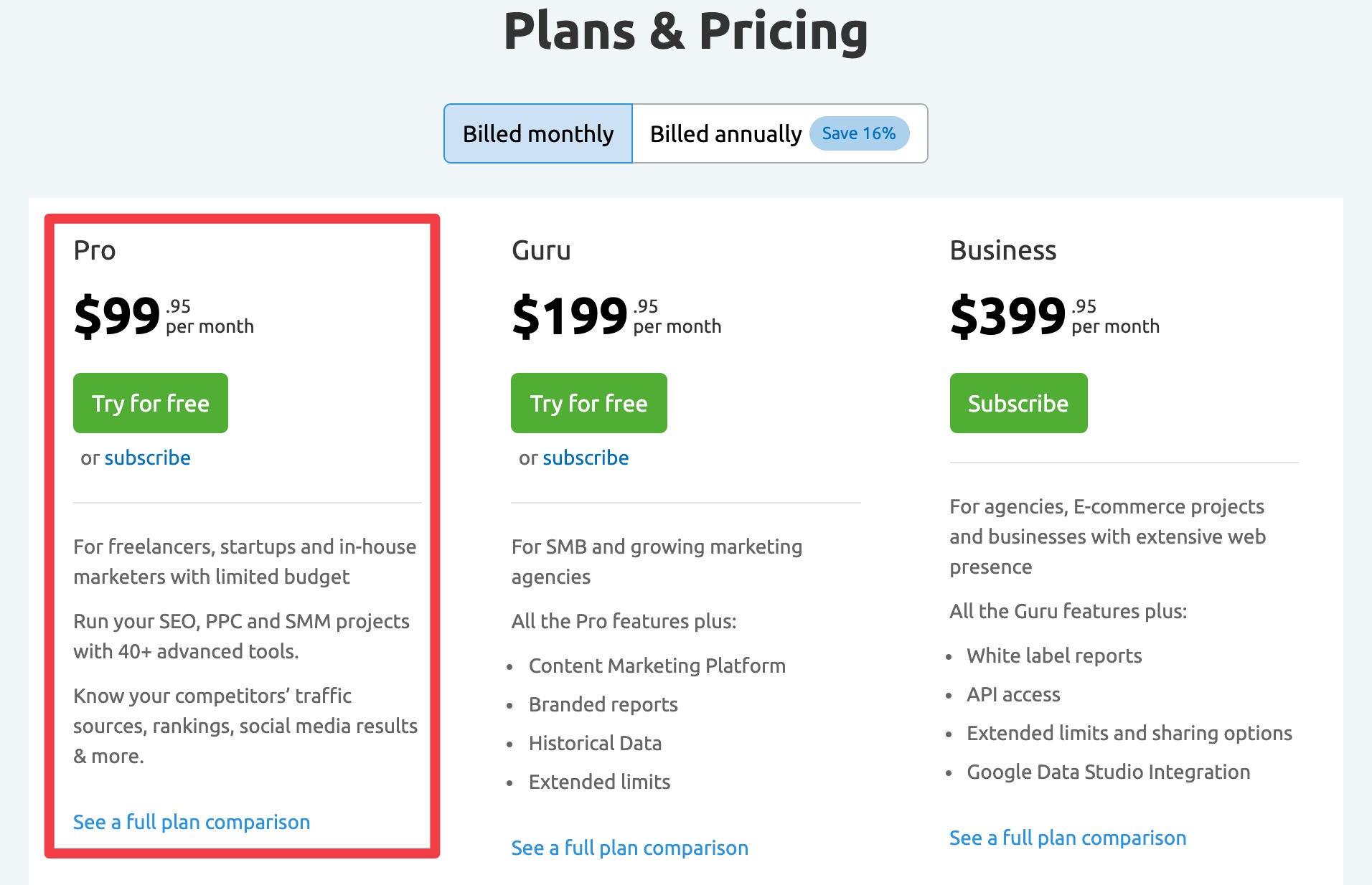
Shout out to Maria because on three occasions during the first 6 months of our subscription she reached out with very enticing upsell offers:
First was to offer a free training session when switching to the discounted annual plan:

And a little reminder:
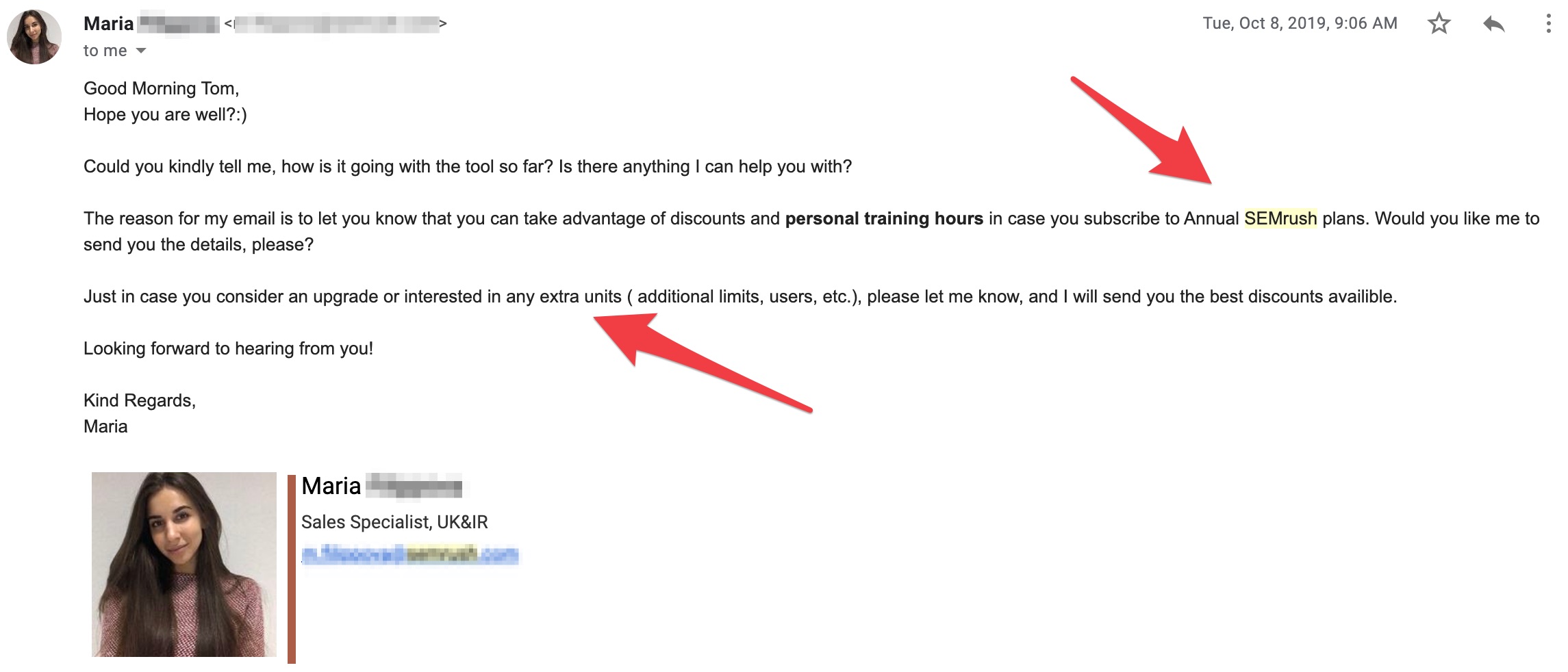
And then with the upsell to the Guru account:
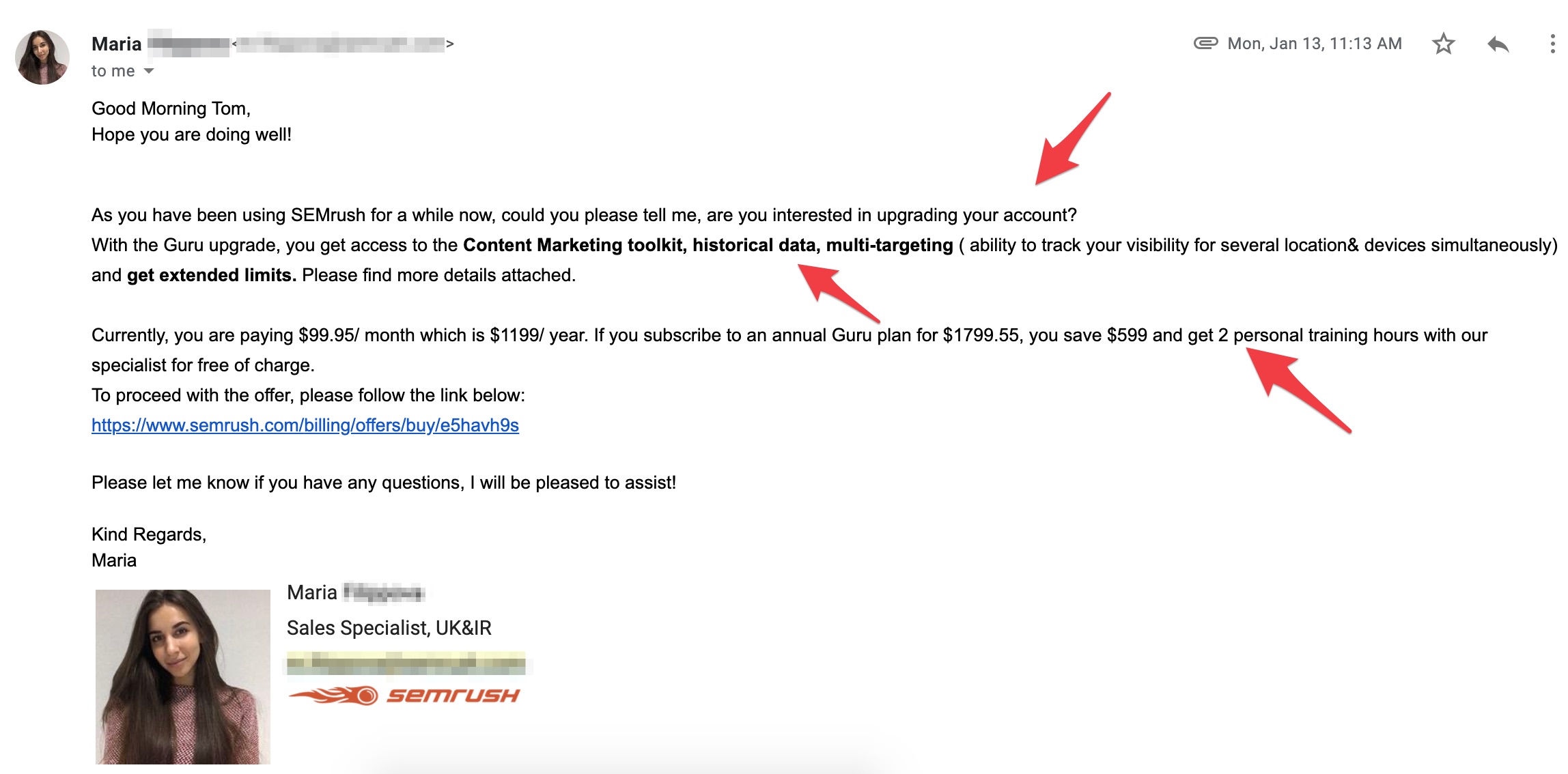
It’s a well known mantra in the online marketing world that it can be as much as five times cheaper to sell to an existing or previous customer than it is to sell to a new one.
In fact, SEMRush’s Chief Strategy Officer has been quoted saying:
The more people expand, the stickier they get.
LEARNING: When building a sales team it may be best to have them first focus on expansion revenue.
Growth Lever 8 – The Right Way To Raise Money
The typical way to build a startup:
- Find a friend that can code
- Choose a hot market
- Leave your job
- Spend 6 months raising cash whilst creating no real value
- Finally raise $2m
- Build something no one wants
- Fail
- Get a job at Facebook
Maybe harsh, but this seems to be the route into SaaS/tech entrepreneurship that many take in one specific part of the world. Naming no names.
I think it’s safe to say that the SEMRush team have taken the opposite route.
In fact, up until 2016… SEMRush had raised $0 in external capital. The business had grown to multiple millions per month in MRR without any investors.
Enter: Eugen Levin.
Eugene is a Russian VC that used to use SEMRush for competitor research… and one day he has a brainwave:
Maybe these guys could use some investment…
He then reaches out to Oleg and Dmitri and they grudgingly hand over their numbers.
In a recent interview, he states that SEMRush’s numbers were some of the best he had ever seen:
- 60% YoY growth @ approx. $
- 40% EDBITDA
- 1 month payback period
Eugene comes back a couple of weeks later… not with an offer for cash, but a request for a job.
His pitch:
We can raise money and then I can help work out how it’s invested
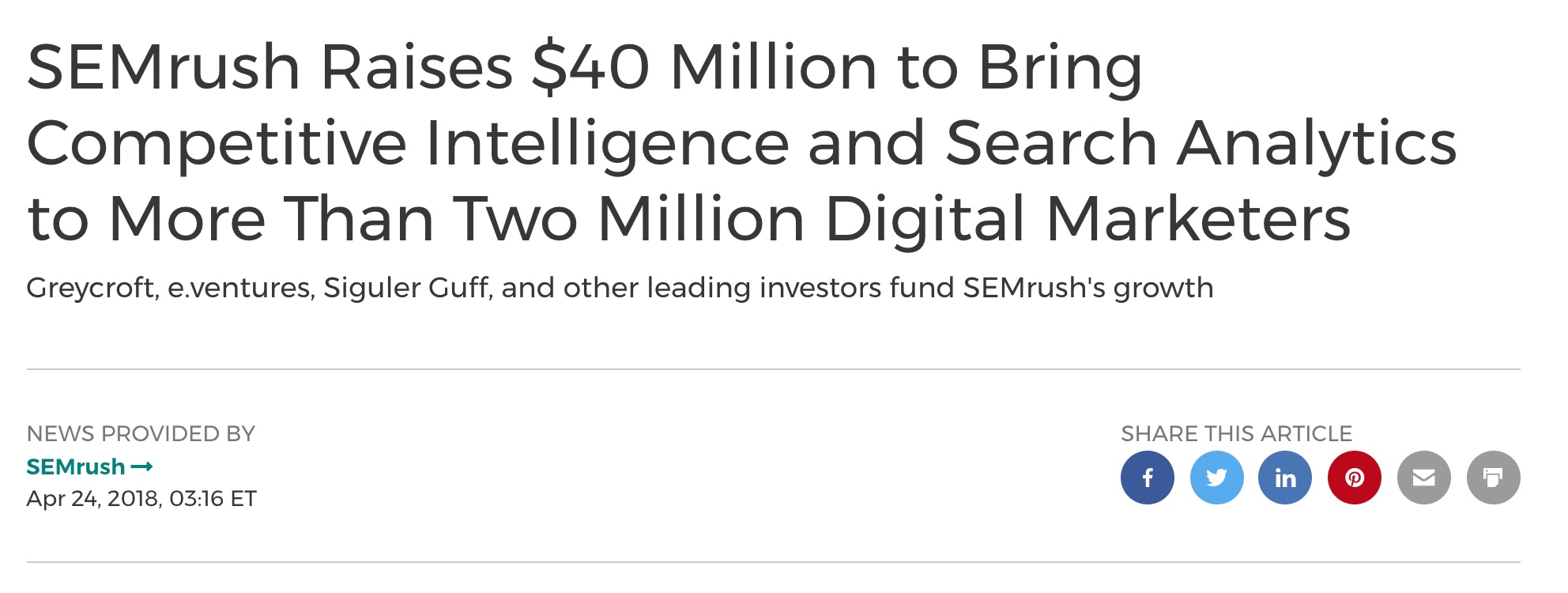
And how was this money spent?
Interestingly… by making one of their key metrics worse.
Before Eugene joined, SEMRush’s payback period was one month. This means that they recouped all the cash used to acquire that customer with their first and second payments.
Though very capital efficient, this does suggest that SEMRush could potentially grow faster by investing more in customer acquisition and therefore increasing the payback period.
Two years after Eugene joined SEMRush and post raise, SEMRush’s payback period extended to 5/6 months as they quintupled the amount they were spending to acquire a customer… presumably skyrocketing their growth rate at the same time.
This is how you raise money…
LEARNING: Instead of going out to raise cash, why not wait until your numbers are good enough that the VC’s want to come and work for you…
Growth Lever 9 – Becoming Ubiquitous
Apologies for the long word but I can’t find a better one to describe what SEMRush have become over the past decade:
Define: ubiquitous – present, appearing, or found everywhere.
And yes, I know it’s an obvious thing to say: get everyone to know you in your market and revenue will grow.
What is less obvious… is how SEMRush have done this.
Maybe it’s because they haven’t spent less than $3k per month on Google Ads in the US over the past eight years:


Maybe it’s because of the army of affiliates they’ve been incentivising since 2009?
Or maybe it’s because of the multinational, multi expert media machine that has been pumping out multiple pieces of content per day for the last few years?
In reality, it’s likely a combination of all these things that compound over time.
I think it’s fitting to end this post with a story from yesterday evening where my girlfriends mother (yes, we’re locked down together) asks me about the title of this case study over dinner:
“I thinking of calling it: SEMRush – The $100m Black Sheep Of SaaS”
I state proudly.
“Black sheep? No, everyone uses SEMRush”
My girlfriend replies…
LEARNING: It’s going to take time, but what are you doing today that is informing and reminding your market that you exist?
What did we learn?
- Are you obsessed with your industry? If not, find one where you are…
- Spend months, if not years building something people like before broadcasting your SaaS to the world.
- Your first growth channel should suit the interest and skillset of the founders…
- How can you leverage the expertise and audience of industry influencers to grow your SaaS?
- When you start: focus. And then use those profits to expand your wallet share…
- How is your local language competition? Could you beat them if you translated?
- When building a sales team it may be best to have them first focus on expansion revenue.
- Instead of going out to raise cash, why not wait until your numbers are good enough that the VC’s want to come and work for you…
- It’s going to take time, but what are you doing today that is informing and reminding your market that you exist?
Which was your favourite Growth Lever, please leave a comment on Twitter or on the post below…
And be sure to add your email here to receive one of these case studies every two weeks.
Tom Hunt is the founder of SaaS Marketer and bCast (B2B podcast hosting for high growth businesses). He lives and works in Hackney, London with his delightful partner Rebecca and little dog called Bear.

